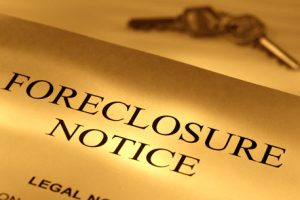Sun Setting On HAMP

The end of 2016 also means the end of the government’s Home Affordable Modification Program, an initiative that has helped many distressed homeowners, and in other situations, made already-stressful situations nearly unbearable.
HAMP appeared in 2009, just as the foreclosure crisis reached a crescendo. At the crisis’ height, one in every 300 households received a foreclosure notice, as compared to one in every 1,200 today. To obtain an interest rate reduction and a partial forbearance, which is what most loan modifications offer, homeowners must meet a dizzying array of qualifications, continually re-submit financial documents, and fulfil other program requirements. So, many homeowners turned to housing advocacy groups to help speed the process. One such group, the Rockland Housing Action Coalition, has helped over 3,500 homeowners obtain mortgage modifications over the past seven years.
“It’s a good program. It’s unfortunate that it’s ending,” remarked RHAC Housing Director Stephanie Rojas.
Mortgage Modifications
For all those last-minute shoppers who are also distressed homeowners, there is still time to apply for a HAMP modification. This relief is no magic wand, but it may be the best option for homeowners who are unable to refinance out of high-interest loans, because they have credit problems, their houses are underwater, or for any other reason.
Despite the success stories on bank and advocacy group websites, HAMP is not a payment reduction plan, at least in most cases. Assume Harry Homeowner has a 6 percent loan and he is $20,000 behind on the payments. If his mortgage lender approves a HAMP modification, it will reduce Harry’s interest rate a point or two and re-capitalize his delinquency back into the unpaid principal balance. So although Harry has a lower rate, he has more money to pay back, so most likely, his installment payments will not drop very much and may even increase slightly.
Reimbursement varies, but the government pays most lenders about a thousand dollars for each HAMP modification they process. So, aside from the fact that the homeowners stay in their homes and keep paying their bills, moneylenders have almost no financial incentive to perform modifications, which explains all the hoops. Fortunately, bankruptcy can help.
Bankruptcy and Mortgage Delinquency
Modifications are not easy to obtain outside bankruptcy. Furthermore, although lenders are not supposed to pursue foreclosure actions if the lenders applied for a modification under the terms of the National Mortgage Settlement, such “dual tracking” still occurs.
Most bankruptcy judges refer disputes between debtors and moneylenders, including mortgage disputes, to mediation. In this forum, lenders must negotiate in good faith. Therefore, some of the loopholes and technicalities that bankers use to deny modifications outside bankruptcy don’t hold water. In short, mediation requires parties to look for solutions and not ways to protect their own interests. As for the spectre of adverse action, bankruptcy takes care of that as well. The automatic stay ensures that money lenders cannot foreclose on homeowners no matter how far behind they are, at least in most cases.
Even if a mortgage modification is not in the cards. Chapter 13 debtors have up to five years to catch up on delinquent mortgage payments, and there are no qualifications to meet or hurdles to overcome once the repayment plan is submitted and approved.
Count on Experienced Lawyers
For real solutions to common money problems, contact an experienced Chicago bankruptcy lawyer from the Bentz Holguin Law Firm, LLC. We routinely handle matters in both Indiana and Illinois.
Resources:
lohud.com/story/money/real-estate/homes/2016/11/30/federal-loan-modification-program-ending/94562352/
bankrate.com/finance/mortgages/borrowers-looking-to-score-mortgage-modification-1.aspx


